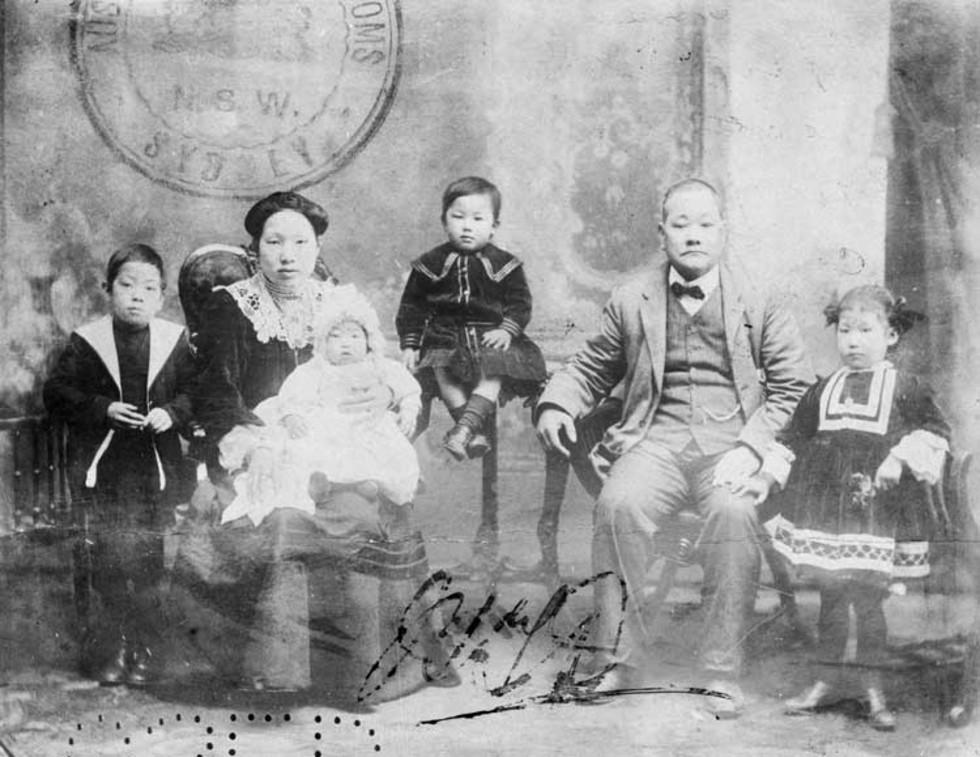


About this record
This is a formal black-and-white studio photograph of Go Gee, her husband Hin Gee and their four children. It was taken in 1908 and used for identification purposes when the family returned to Australia from China in 1915. The photograph is signed in ink and stamped by Sydney Customs and Immigration.
Educational value
- This photograph, and the certificate it is attached to, provide an example of the workings of the Immigration Restriction Act 1901. In the early part of the 20th century Chinese Australians faced official discrimination under the Act.
- The Immigration Restriction Act 1901—together with the Naturalisation Act 1903, which prevented Chinese from becoming British subjects—formed the basis for the so-called ‘White Australia Policy’. (Note that the term ‘White Australia Policy’ was never in official use, but it was common in political and public debate throughout the period.)
- Under the Immigration Restriction Act 1901, special Customs and Immigration identification documents were required for some Australian residents. These requirements imposed a burden on non-Europeans: if they wanted to be able to re-enter Australia without penalty they had to provide proof of their identity in the form of photographs, handprints or reference letters from 'respectable' members of the Australian community. Australians of British background could enter freely.
- Under the Act, a dictation test could also be used to control the entry of Chinese and other non-Europeans. To pass the test, an applicant needed to write 50 words in any European language, as dictated by an immigration officer. (After 1905, the officer could choose any language at all: a Chinese immigrant, for example, could be asked to write out 50 words in French, Italian or another language.) Because few migrants could pass such a test, it could be used to screen out any applicant from an ‘undesirable’ country.
- This photograph is attached to the back of a Certificate of Exemption, which will spare 26-year-old Mrs Go Gee from having to sit the dictation test on returning to Australia—providing she comes back within three years.
- The Gees were a married couple who had migrated to Australia from China. In the 19th and early 20th centuries most Chinese who came to Australia were men who worked to make money to send home to their families in China. This meant that there was a significant difference in the number of Chinese men and women in Australia: in 1901, there were around 29,000 Chinese men and fewer than 500 Chinese women in the country.
- The photograph shows the four Australian-born children of Go Gee and her husband, Hin Gee. The eldest boy, Albert Edward Gee, was born just after Federation in 1902. Australia was home to children of Chinese parentage from the 1850s—some came from China with family, while many more were born in Australia. A significant proportion of these children had mothers of Indigenous, European or other non-Chinese background.
- Many Chinese Australians maintained connections with China and other overseas Chinese communities. While they established lives in Australia, they also made trips overseas to visit family, to do business, for education and for holidays.
Acknowledgments
Learning resource text © Education Services Australia Limited and the National Archives of Australia 2010.
Related themes
Need help with your research?
Learn how to interpret primary sources, use our collection and more.



